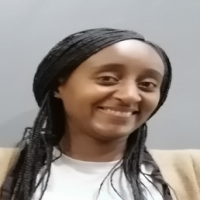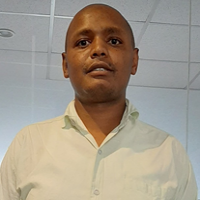MASIKA, David Wekesa
Masika David Wekesa MSc Applied Computing-UoN(2020), Bachelor of ICT from Maseno University (2010).
Web Design & Development, Support.
Lead Auditor - Quality Management Systems. 2013 to Date
Projects involved in:
- University of Nairobi Strategic Plan 2023-2028 Committee member-Data Collection and Analysis Expert
- KERRA - Implementation of ISO 2015 Compliance Standard. Year 2018.
- University of Nairobi ISO 2008 to ISO 2015 -Technical Committee member on transition
He specializes in systems analysis, design, development, and implementation for web-based applications.
His Research Interests are Web. Applications Development, ICT4D - Agri-Informatics and Systems Compliance to QMS.
Project Summary
Research Supervisor: Dr. Evans Miriti
Project Title: A Veterinary Notification Service for Livestock Farmers(A case study of Bumula Sub-county, Bungoma County)
Abstract: The problem of timely access to Veterinary Doctors by Livestock farmers has paused great deal on livestock mobile health (mHealth) in Bumula Sub County, Bun Goma County. This problem is traceable at the initial stage of locating and communicating to veterinary doctor for the veterinary service. The project’s aim was to investigate application of modern Information Technology (ICT) in addressing accessibility to veterinary doctors by locating the nearest veterinary doctor and request for livestock treatment. The specific objectives that project sought to address include; Determining communication needs for the livestock farmers, propose & design Veterinary Notification Service prototype in which livestock farmers would locate and request the nearest Veterinary Doctor as soon as livestock fall sick. In this project, a case study of Bumula Sub County in Bun Goma County was used to study livestock farmers’ challenges in reaching out to Veterinary Doctor. Tests and evaluation findings indicated that application of integrated services of simple message service (SMS), Web application and Mobile application have positive outcome in veterinary notification process necessitated by mapping the nearest Veterinary Doctors to the livestock farmers’ treatment requests. The introduction of veterinary notification service for livestock farmers is a solution that would greatly improve in animal husbandry healthcare, treatment and real time consultancies in Bumula Sub County. Further study should also explore methods that can be used to facilitate other services on the prototype such as information and videolized basic livestock care.




















































